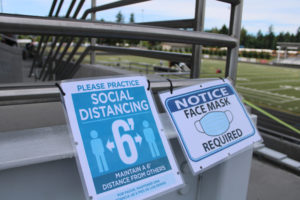It is becoming increasingly clear that the federal government’s monthslong push to “return to normal” and get past the COVID-19 pandemic is not working.
In March, when the Biden administration unveiled its National COVID-19 Preparedness Plan and a team of medical professionals — many of them former advisors to President Joe Biden — released their own “roadmap” for moving past the pandemic, we were just coming down from the highest COVID transmission, hospitalization and death rates we’d ever experienced thanks to the highly contagious omicron variant and the goal for “getting back to normal” was clear: “The United States’ pandemic phase — with restrictive public health measures — can end when average daily deaths due to COVID and other major respiratory illnesses decline below 0.5 per 1 million Americans, or 165 deaths a day at a national level. “At that point, the United States can transition into the next normal,” the authors of the “COVID Roadmap” stated in their 136-page report.
That report came out just a few days before mask mandates across the country — one of the only remaining public health measures we had to prevent widespread community transmissions of the airborne SARS-CoV-2 virus that causes COVID-19 — went away in most U.S. communities, including inside schools, grocery stores, retail shops and public buildings.
We all know what happened next: people started “returning to normal.” Most stopped masking in public, even in crowded, not-well-ventilated indoor spaces. Many stopped testing for COVID symptoms at all, claiming “it’s just allergies” or “I just have a cold.” The majority of testing sites — which were so common during the height of the first omicron wave — went away. And though the government provided free, at-home COVID tests, those who did test positive at home were often unclear about how to report their case and therefore unlikely to have their cases counted by county public health agencies.
Now, we have a couple of new omicron variants (BA.4 and BA.5), which are more contagious than ever and, seemingly, able to get through naturally- and vaccine-acquired immunity.



